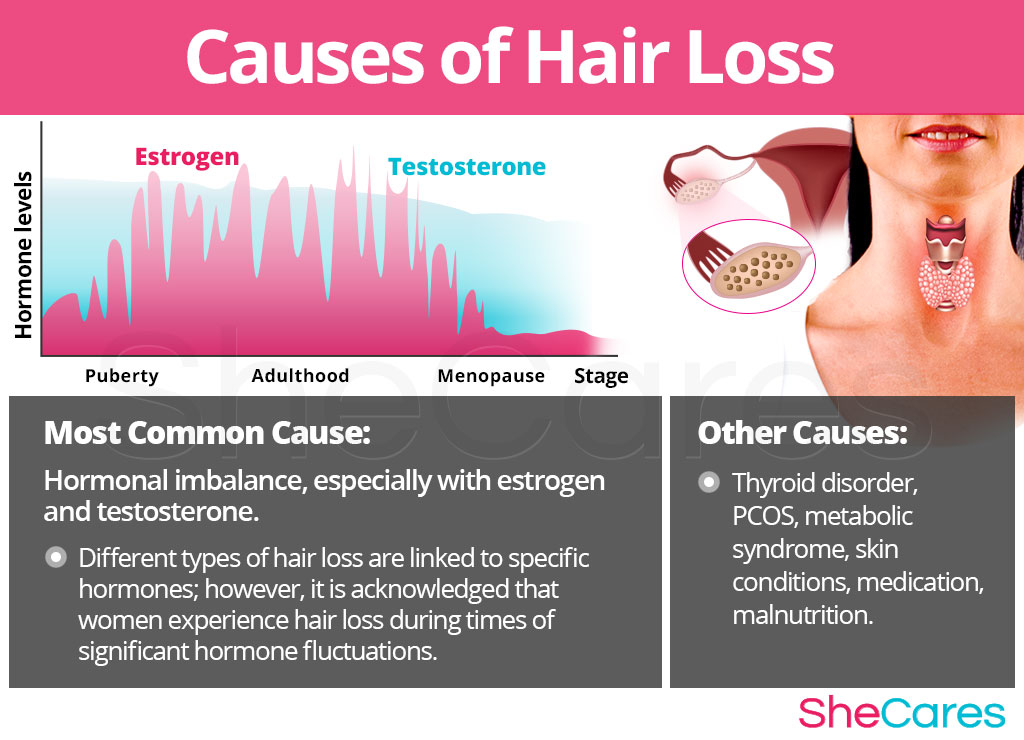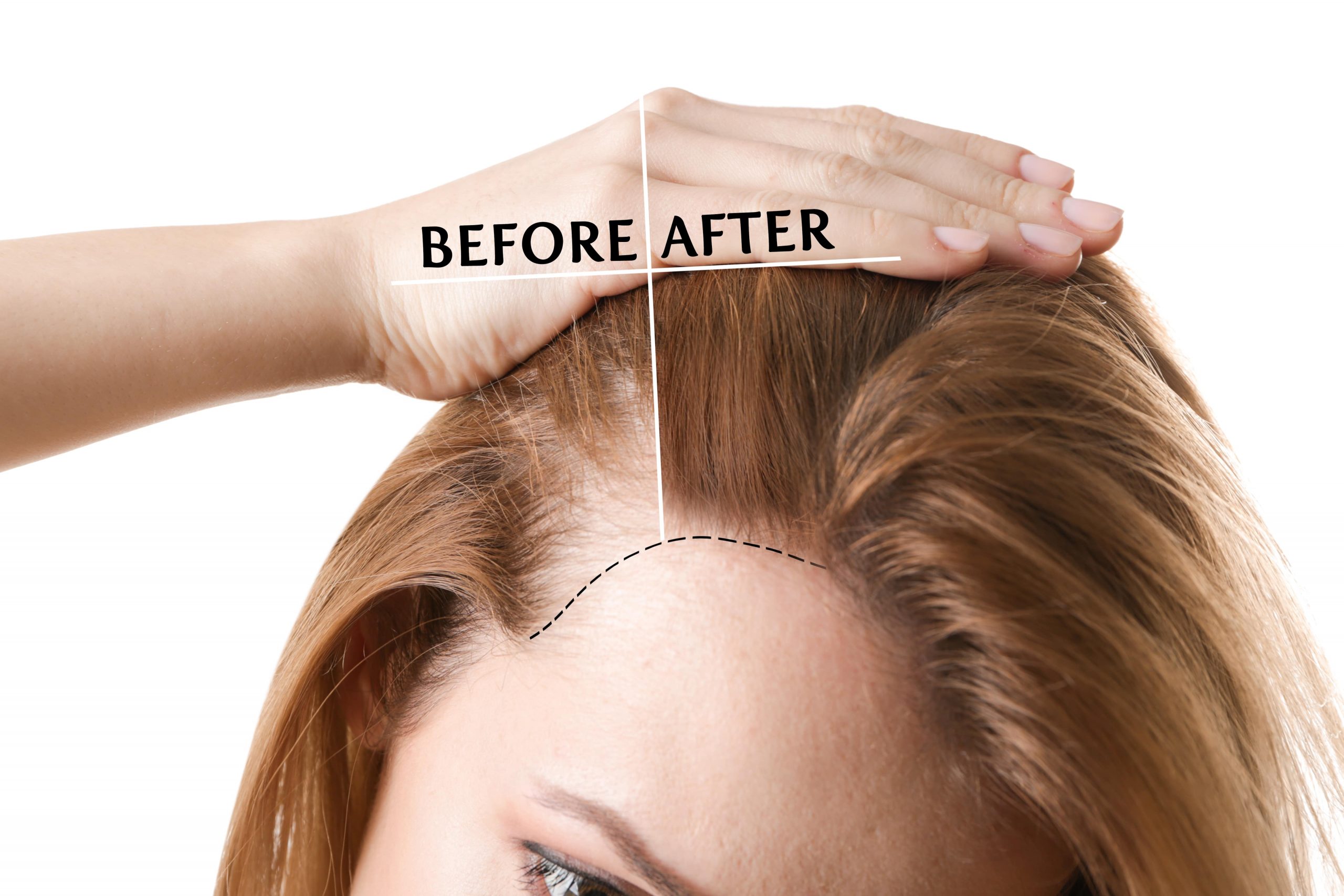Table Of Content

Males with this condition tend to lose hair from the temples and crown of the head. In females with androgenetic alopecia, the hair usually becomes thinner all over the head. A person may lose hair as a result of a health-related issue, such as alopecia areata, a nutrient deficiency, or medication use.
Androgenic alopecia

If you have healthy hair on the back or side of your head, a doctor can surgically remove hair strands from those areas and graft them into your scalp in a bare area. It’s another expensive treatment that isn’t generally covered by insurance, but it tends to be a long-lasting solution. You can either purchase over-the-counter laser devices to use at home or receive the treatments from a provider. CCCA and LPP fall under the umbrella of lymphocytic scarring alopecia. The telltale signs of these conditions are chronic inflammation of the scalp and the scarring of hair follicles, which can result in irreversible hair loss, Agbai notes. Alopecia areata is an autoimmune condition that is characterized by “round patches of hair loss on the scalp,” although it can occur elsewhere on the body, Agbai says.
What causes female pattern baldness?
And early treatment of alopecia may reduce the speed of thinning and promote regrowth. A healthcare provider can tell you more about what to expect in your situation. Female pattern baldness is a type of hair loss that’s more gradual than telogen effluvium. It’s not known exactly what causes female pattern baldness.
16 Best Hair Growth Shampoos, Tested & Reviewed by Experts 2024 - ELLE
16 Best Hair Growth Shampoos, Tested & Reviewed by Experts 2024.
Posted: Fri, 19 Apr 2024 07:00:00 GMT [source]
When to see a doctor
They may ask whether any of your relatives have hair loss. You can lose hair during menopause as your estrogen and progesterone levels drop. Also, because hair follicles shrink during this time, your hair might be thinner, fall out easier, and grow more slowly.
A common cause of this imbalance is polycystic ovary syndrome (PCOS). It leads to cysts on a woman’s ovaries, along with other signs and symptoms, which can include hair loss. Stopping some types of birth control pills can cause a temporary hormonal imbalance. Women who develop a hormonal imbalance can develop thinning hair (or hair loss) on their scalp. You can change how you care for your hair, which can prevent hair loss. Once you damage a hair follicle, hair cannot grow from that follicle.
document.getElementsByTagName('head') .appendChild(rs);
The doctor might reduce the dosage or switch the person to a different medication. If traction alopecia continues, a person may develop patches of hair loss and thinning of the hair. If a person has this condition, they should contact a doctor. A doctor may recommend corticosteroid injections to the scalp or prescribe other medication to help the hair grow back.

Find Care
Many people with female pattern baldness accept it as part of the aging process and don’t see a healthcare provider. Reach out to your healthcare provider as soon as you notice signs of female pattern baldness, especially if it causes stress, anxiety or depression. Medications and treatments are available that can stop or reverse female pattern baldness. A lot of different things contribute to hair loss, also known as alopecia, in women. The most common causes of sudden rapid hair loss, or telogen effluvium (TE), are stress and fluctuating hormones, especially after pregnancy. Hair might also fall out after a major illness or injury, but the shedding usually doesn’t happen until a few months later, regardless of the trigger.
Further studies are required to determine the magnitude of the benefit if any. Hormonal treatment, i.e. oral medications that block the effects of androgens (e.g. spironolactone, cyproterone, finasteride and flutamide) is also often tried. To assess hair shedding, women should choose which of the six photographs of hair bundles best represents how much hair they shed on an average day. But consult your doctor before you start to worry; thinning hair is often reversible, Dr. Simpson says. Advanced treatments are available for more serious hair loss.
For example, if you take too much iron, you can develop iron poisoning. While you can buy a microneedling device without a prescription, it’s best to check with your dermatologist first. It’s also important to get the right microneedling device.
AARP is a nonprofit, nonpartisan organization that empowers people to choose how they live as they age. Several serious diseases also attack the hair follicle, says Robert Brodell, a dermatologist at the University of Mississippi Medical Center. Most of us shed hair a little at a time — pretty much all the time. This dermatologist is using a dermatoscope to examine a patient’s scalp. If ringworm does not heal by itself, a doctor may prescribe an antifungal medication such as griseofulvin.
See your doctor if you are distressed by persistent hair loss in you or your child and want to pursue treatment. For women who are experiencing a receding hairline (frontal fibrosing alopecia), talk with your doctor about early treatment to avoid significant permanent baldness. Have a well-balanced diet and get enough iron, zinc, and vitamins D and B. Minimize the use of direct heat on the hair and keep hair well-conditioned.
Chemical hair products and treatments can cause permanent hair damage. Women typically see hair loss related to hair products more often than men. If done improperly and with the wrong products, chemical hair curling, bleaching, relaxation treatments, coloring, or perming can cause hair loss. The Food and Drug Administration has approved a low-level laser device as a treatment for hereditary hair loss in men and women. A few small studies have shown that it improves hair density.
However, lifestyle factors, such as frequent tight hairstyles, and medical conditions, such as alopecia, can also cause hair loss. Without proper treatment, female pattern baldness is permanent. Many people with female pattern baldness are comfortable with how they look and don’t seek treatment. However, your healthcare provider can help slow or replace your hair loss.
A variety of treatments have been developed to help regrow hair and thicken existing hair on patients with alopecia, dermatologists say. Their effectiveness largely depends upon what type of alopecia you have and how quickly you start treatment. Understanding the underlying cause of your hair loss is absolutely necessary in determining the best approach to halt and reverse any further damage to your hair and scalp. Your first stop would be to see your general practitioner (GP) who can perform a medical workup to exclude other reasons for hair loss.
Hair loss related to androgenic alopecia tends to happen gradually. While some people might experience hair loss as early as puberty, others might not notice symptoms until their middle ages. Trying to tell if you’re actually losing hair or just experiencing some normal shedding?
No comments:
Post a Comment